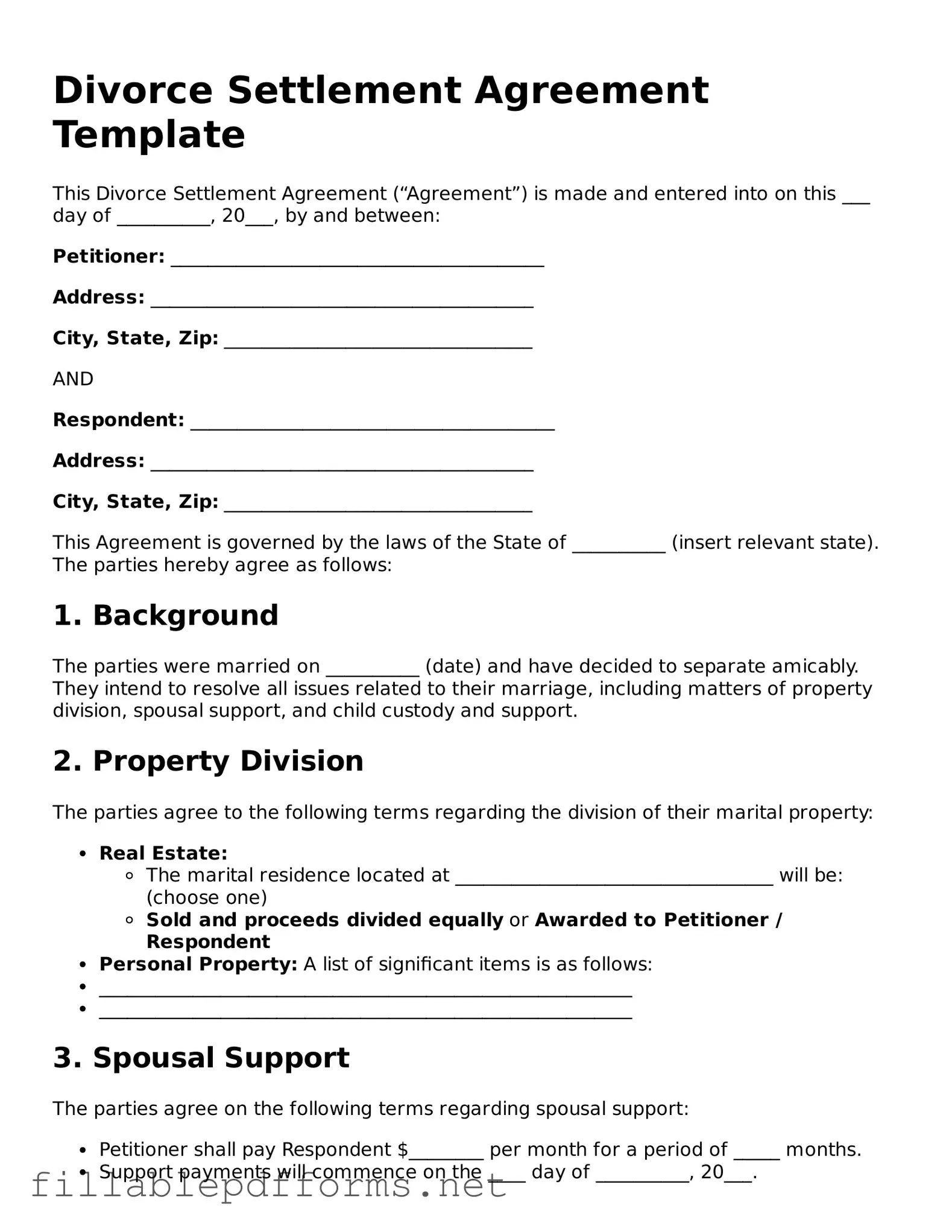When navigating the complexities of divorce, a Divorce Settlement Agreement form serves as a crucial tool for couples seeking to formalize the terms of their separation. This document outlines the specifics of asset division, including property and financial accounts, and addresses the responsibilities of each party regarding debts incurred during the marriage. Child custody arrangements, visitation schedules, and child support obligations are also integral components of the agreement, ensuring that the welfare of any children involved remains a priority. Additionally, spousal support terms may be included, detailing any financial assistance one spouse may provide to the other post-divorce. By clearly delineating these elements, the Divorce Settlement Agreement aims to minimize future disputes, providing both parties with a clear understanding of their rights and responsibilities moving forward. Ultimately, this form acts as a roadmap for a smoother transition into life after marriage, fostering a sense of closure and mutual agreement.
